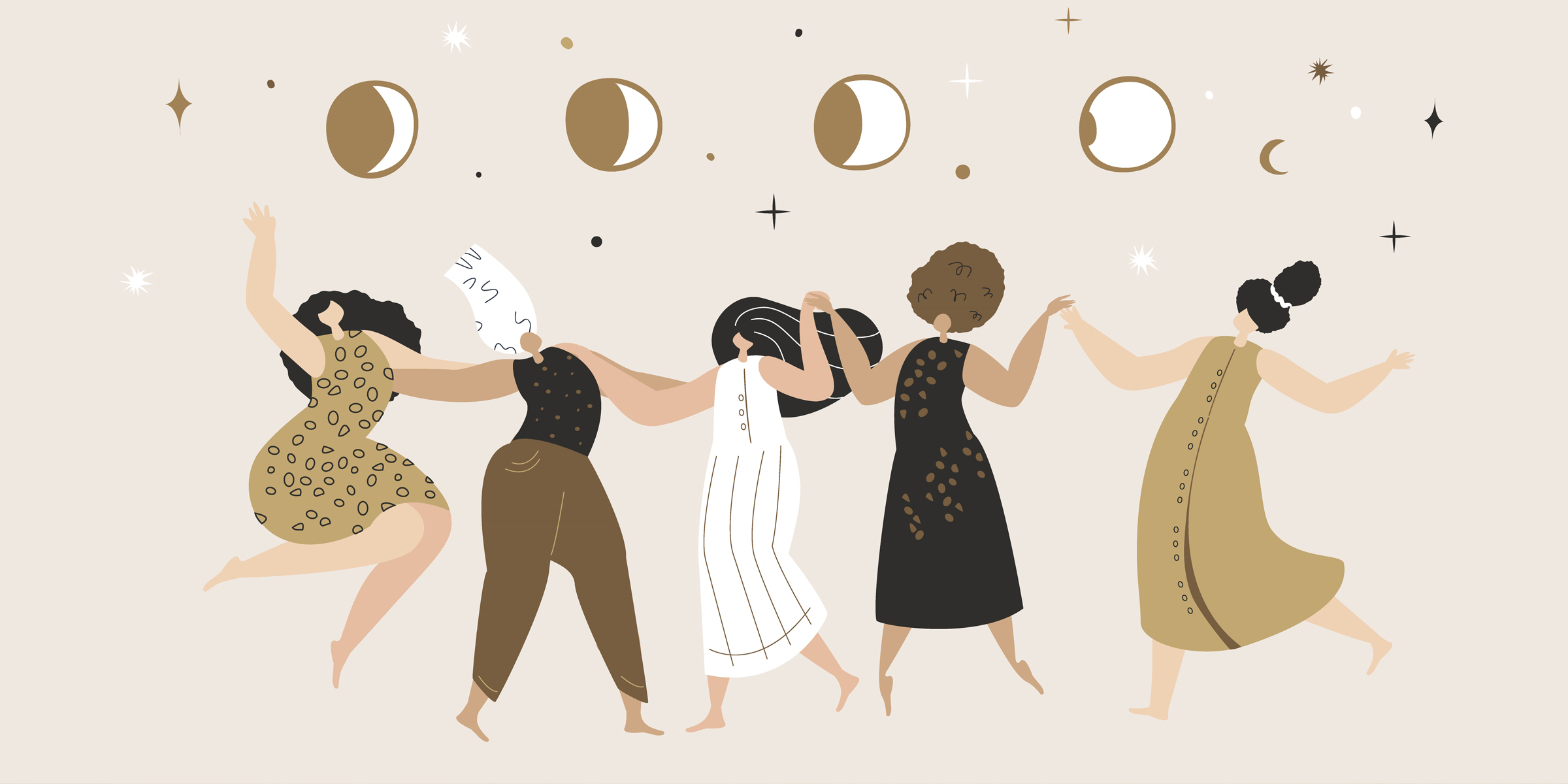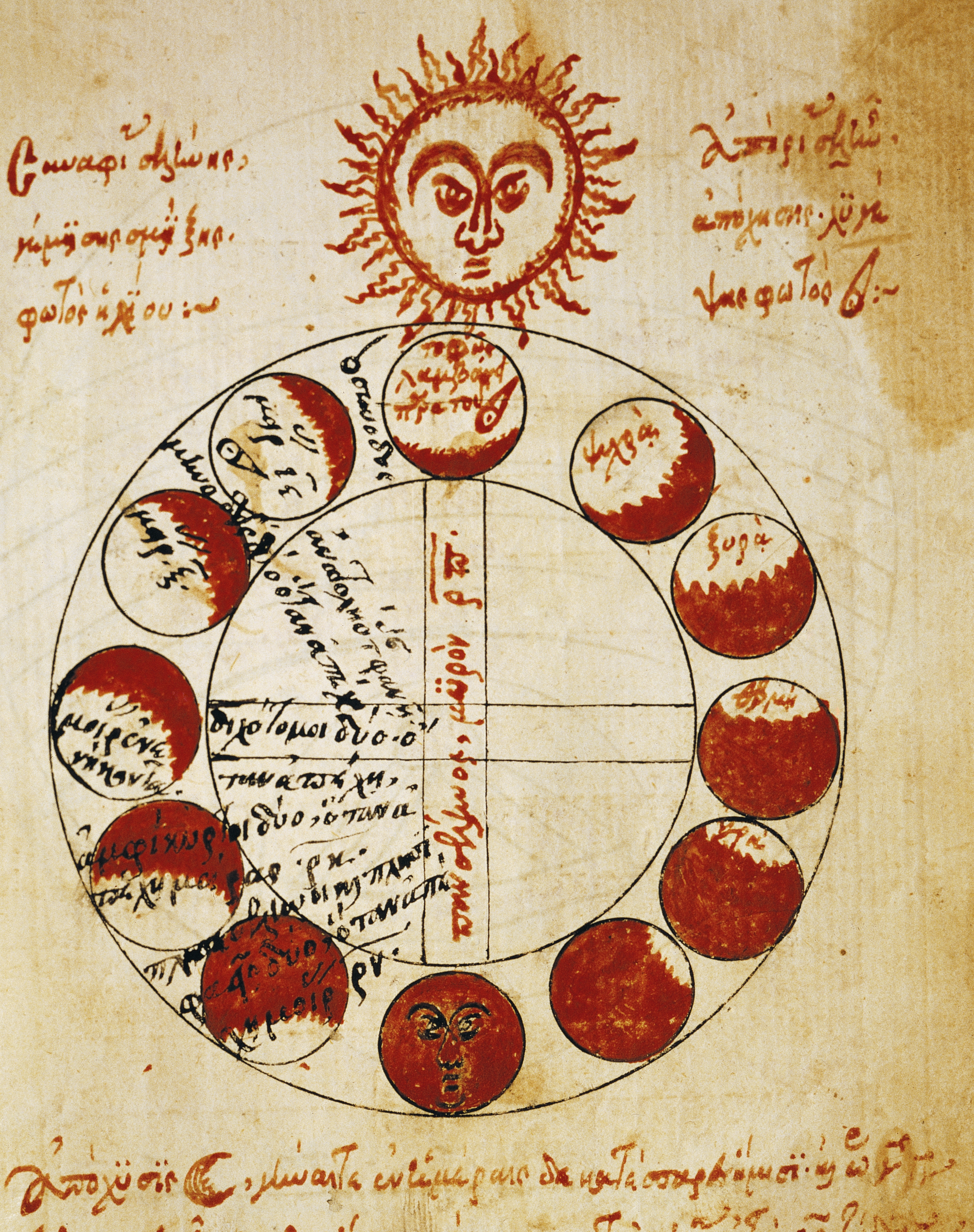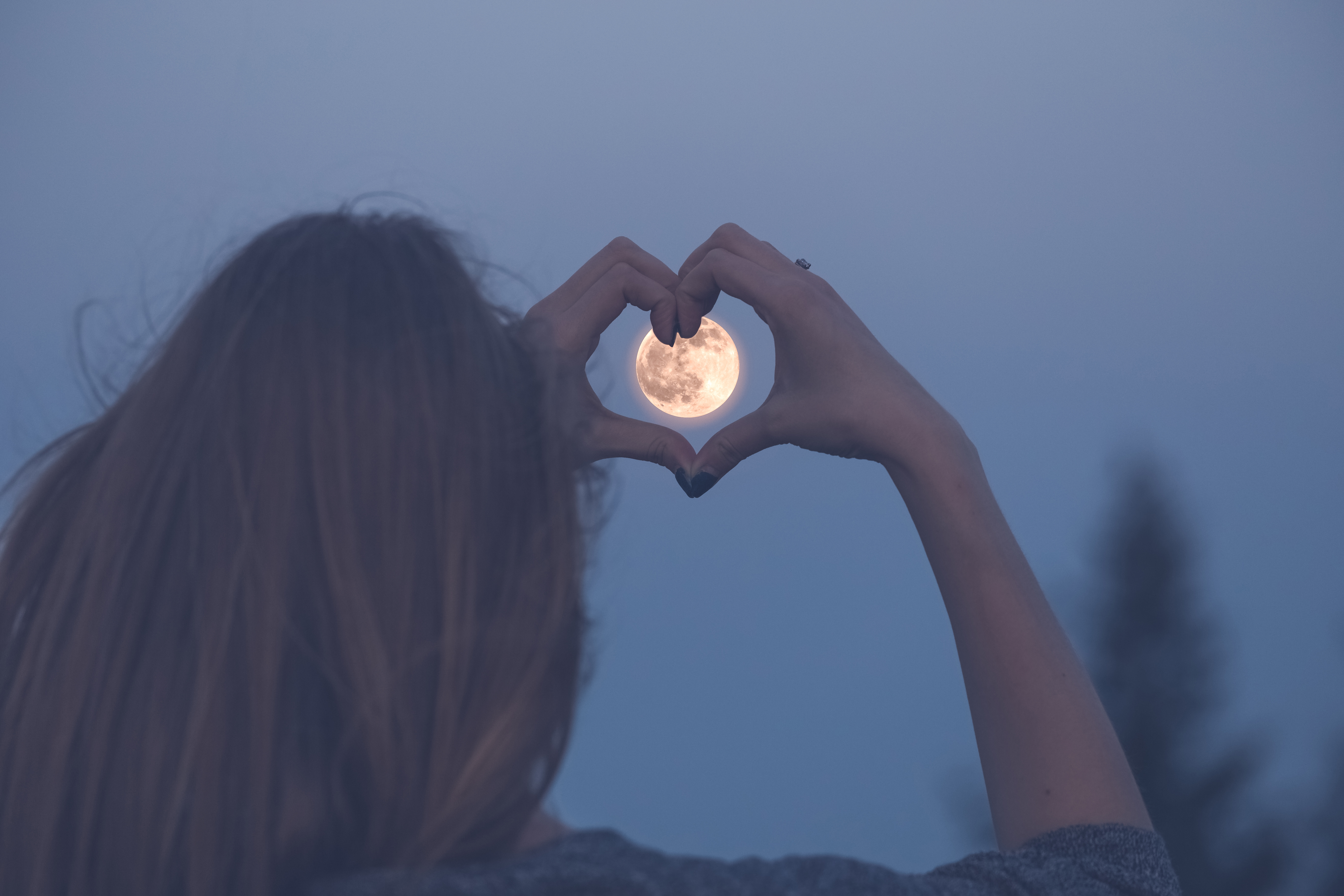
Red Moon Cycle: Connection Between the Menstrual Cycle & the Lunar Calendar
For thousands of years, women counted their fertile cycles according to the phases of the Moon; now, there may be a scientific foundation for the myth behind the Red Moon Cycle.
Once, humanity lived in a dark, frightening world lit only by the Moon and the Sun, and they attributed mystical powers to these celestial objects.
Women, especially, identified strongly with the Moon and found that their menstrual cycles, the essence of their fertility and feminine power, were the exact length of a moon cycle. Their menses seemed to align with certain lunar phases.

16th-century Greek manuscript depicting the cycles of the moon. | Source: Getty Images
Today, menstruation is usually characterized negatively, as unpleasant, and even dirty instead of a perfectly natural process.
In civilizations like ancient Greece, the Moon represented the goddess Selene, and the Greeks believed that women who gave birth at the time of the full moon had an easier labor.
The revival of the mysticism of the Red Moon Cycle harkens back to a belief that a woman's spiritual power was enhanced by her fertility and by her feminine cycle.
In the spiritual journey of the lunar cycles, a woman would have menstruated during the new moon, and ovulate, and be at the peak of their fertility during the full moon; the Red Moon Cycle is the opposite and is believed to be spiritually empowering.
What Is the Red Moon Cycle?
The Red Moon Cycle is the name given to the menstrual cycle of women who menstruate during the full moon, which is believed to be characteristic of priestesses, medicine women, and spiritual leaders.
While the woman with the White Moon Cycle is nurturing, the woman with the Red Moon Cycle turns her power inwards to self-realization and empowerment.
Many species coordinate their fertile cycles according to the moon's phases, thus ensuring reproductive success.
The reverse of the more common peak of fertility was believed to be potent and mystical. Women who menstruate during the full moon are considered the beneficiaries of powerful creative energies and are at their most fertile with the new moon.
How to Determine Your Moon Cycle?
Most women (whose natural rhythm is not altered by chemical contraceptives) track their menstrual cycles with a calendar. However, the menstrual cycle is not 30 or 31 days, but 28 days -- the exact length of the lunar cycle.
To discover her lunar cycle, a woman should consult a lunar calendar and start marking at which moon phase she starts menstruating.
Some might find their cycle shifts slowly throughout the year, and the moon's phases from new to waxing to full, and finally waning. Others will be regular as clockwork, from menstruation, pre-ovulation, ovulation, and pre-menstrual phases.
What If You Don't Have a Red Moon Cycle?
The White Moon Cycle is the most common and is associated with fertility, and nurturing, while the Red Mood Cycle speaks to spiritual empowerment and mysticism.
But what about the women whose menstrual cycle doesn't fit the above patterns? The Pink Moon Cycle indicates that menstruation occurs during the waxing moon and is associated with transformation and gaining strength.
The Purple Moon Cycle indicates that menstruation occurs during the waning moon and heralds a period of healing, contemplation, and rest.
The more significant transformation is in the attitude of women who are now celebrating and discussing their menstrual cycles openly instead of hiding them as something shameful or even disgusting.

Woman looking at the full moon. | Source: Getty Images
What Does Science Say?
A 1986 study observed 826 volunteers and discovered that 28.3% of the women menstruated at the time of the full moon, which indicated a connection between the phase of the moon and the women's reproductive cycle.
A more recent study in 2021 analyzed the records of 22 women who recorded their menstrual cycles meticulously over a long period of time, some as many as 30 years.
The study proposed that the lunar cycle did affect the reproductive cycle and that, in all probability, the moon's gravitational forces also played a role, as did its luminescence.
The scientist hypothesized that in earlier times, before artificial light, the moon exerted an even greater influence on human reproduction, as it does in other species.
Many species coordinate their fertile cycles according to the moon's phases, thus ensuring reproductive success. However, other scientists disagree that humans are attuned to the moon.
According to an evaluation of over 7.5 million cycles, there was no correlation between lunar and the female reproductive cycle. Data scientist Dr. Marija Vlajic Wheeler said:
“Looking at the data, we saw that period start dates fall randomly throughout the month, regardless of the lunar phase."
Whatever science agrees or disagrees with will take years to untangle. Still, many women find that belief in an intimate connection to a greater world transforms the once shameful menstruation into something empowering.
The information in this article is not intended or implied to be a substitute for professional medical advice, diagnosis or treatment. All content, including text, and images contained on WomanlyLive.com, or available through WomanlyLive.com is for general information purposes only. WomanlyLive.com does not take responsibility for any action taken as a result of reading this article. Before undertaking any course of treatment please consult with your healthcare provider.
